Transfiguration Monastery
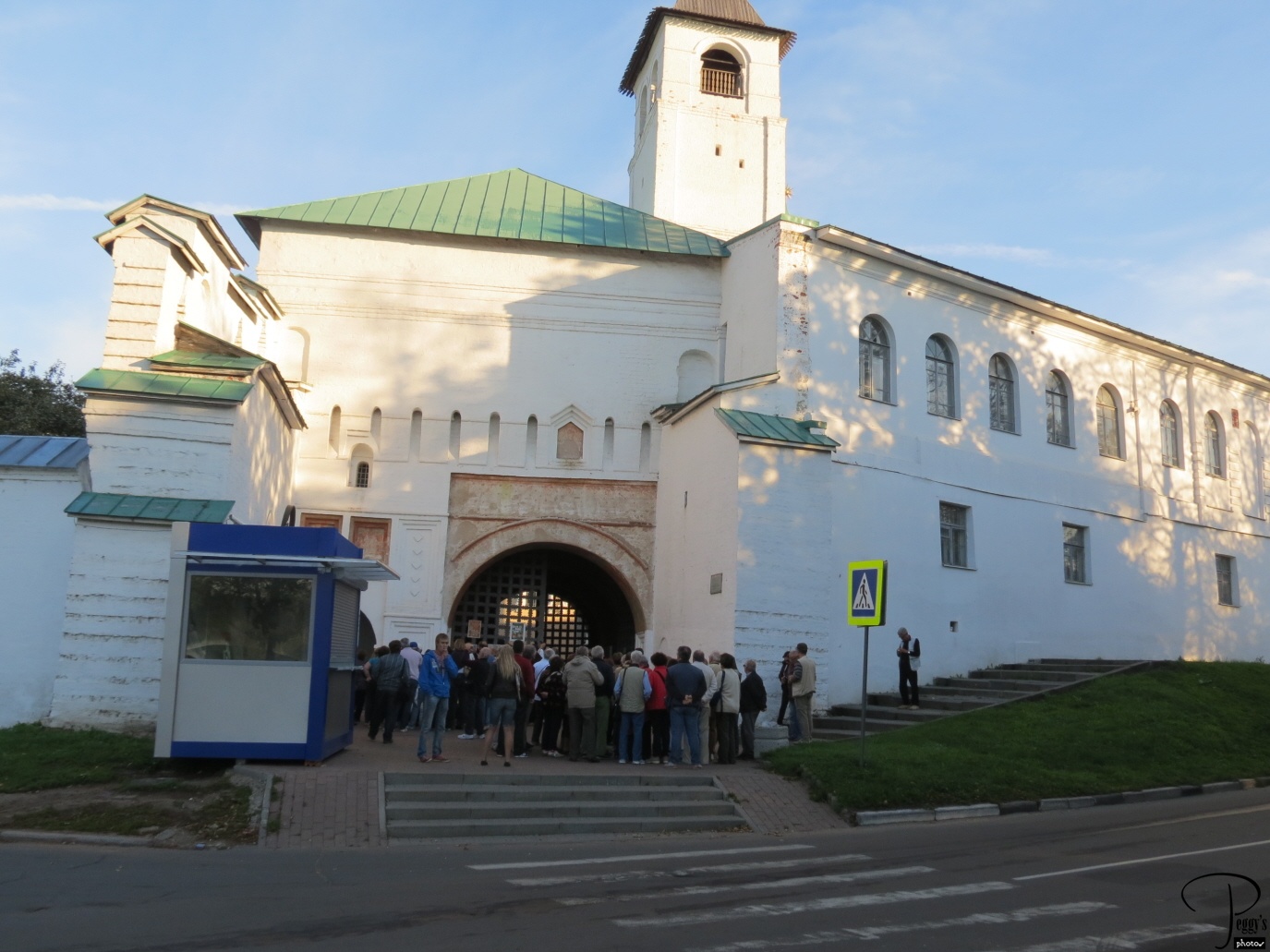
We started our tour of Yaroslavl at 8 a.m. Yarsolavl is located at the juncture of the Volga and Kotorsl Rivers. It was founded in 1010 by Kiev Prince Yaroslav the Wise. It is 161 miles (250 kn) from Moscow and is the largest of the eight cities in Russia’s Golden Ring, a group of tourist and historic towns around Moscow. Yaroslavl has a population of about 600,000.
Our first stop was at the Transfiguration of the Savior of the Spassky Monastery––also called the Spassky Monastery, the Transfiguration Monastery, and the Spaso–Preobrazhensky Monastery. The monastery used to be Yaroslavl’s religious and cultural center and its churches date back to the 16th and 17th centuries. The Transfiguration Cathedral is almost 800 years old, making it the oldest structure in Yaroslavl.

Transfiguration Monastery
The Transfiguration Cathedral and the Belfry
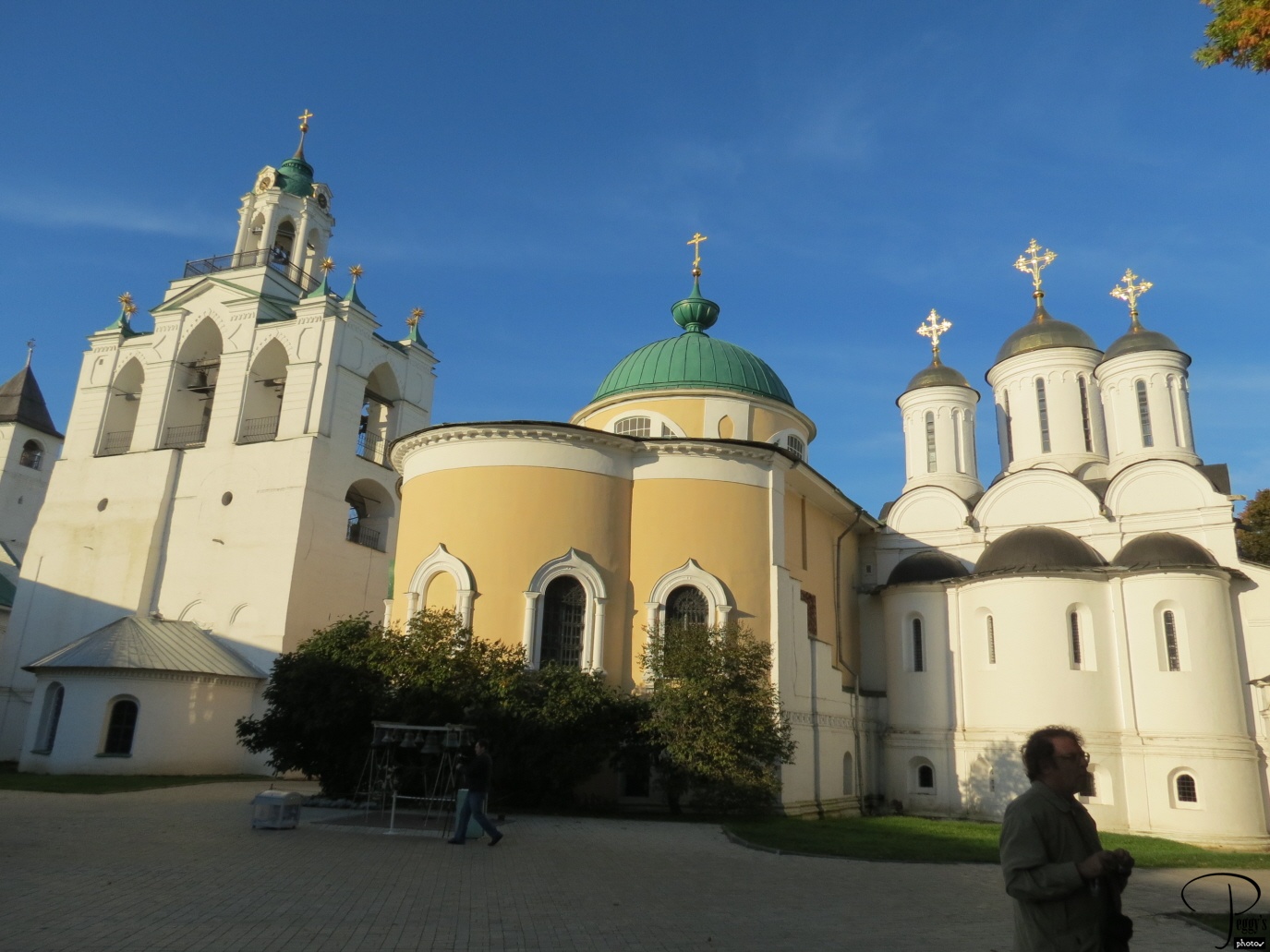
Photo of the Transfiguration Cathedral, almost 800 years old, and the Belfry. For more photos of the monastery, go to
http://www.peggysphotos.com/yaroslavl–churches/
or to Slide Shows, Eastern Europe, Russia, Churches of Yaroslavl, Russia

The Transfiguration Cathedral and the Belfry
Bell Ringing at the Transfiguration Monastery–Movie
We were treated to bell ringing at the monastery, an ancient tradition.

Bell Ringing at the Transfiguration Monastery–Movie
The Assumption Cathedral
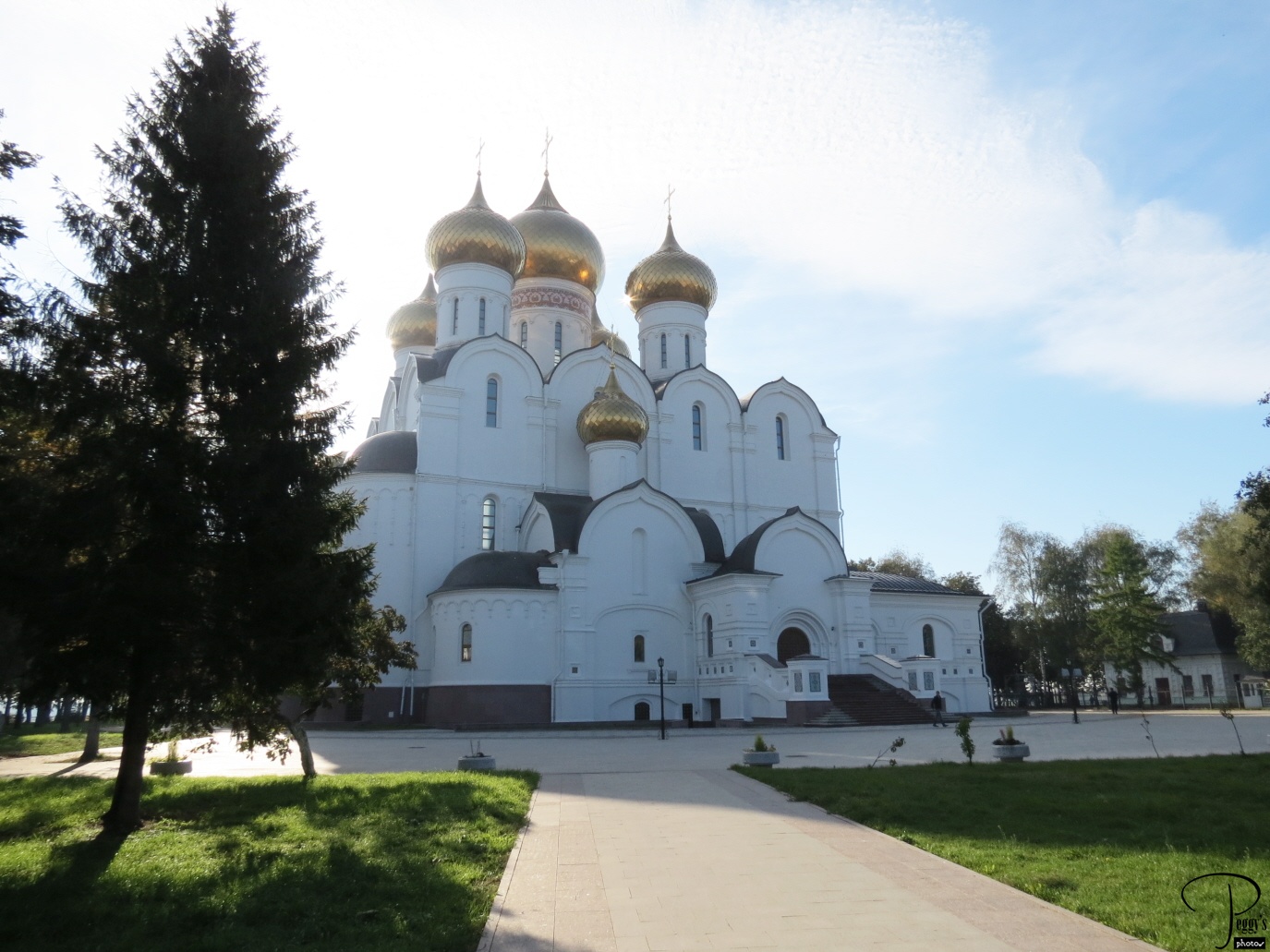
The Assumption Cathedral was originally built in 1210 as a wooden church. It burnt down in 1215, then was rebuilt in the 16th century. It was one of the churches that were destroyed by the Soviets (the Soviets destroyed from 40–60% of the churches in Russia). The present church was only recently rebuilt––from 2005 to 2010.
You will notice from the photos of the Russian Orthodox churches that there are no pews or benches in them. Parishioners are expected to stand for masses and these masses can go on for three or more hours. As our local guide told us: “Jesus suffered for us and so we should be willing to suffer for Him.” He said we had it too easy in Western nations.
For more photos of the Assumption Cathedral and of its grounds, go to
http://www.peggysphotos.com/yaroslavl–churches/
or to Slide Shows, Eastern Europe, Russia, Yaroslavl: Churches.

The Assumption Cathedral
World War II Memorial: Changing of the Guard–Movie
After leaving the Assumption Cathedral, on the way back to our bus, we came upon the Changing of the Guard ceremony at the World War II memorial near the cathedral. The cadets in charge of guarding the memorial and its eternal flame were young. The girls had ribbons in their hair and they were quite good at goose stepping.
For more photos of the memorial, go to http://www.peggysphotos.com/yaroslavl–churches/
or to Slide Shows, Eastern Europe, Russia, Yaroslavl: Churches

World War II Memorial: Changing of the Guard–Movie
Yaroslavl’s Town Square
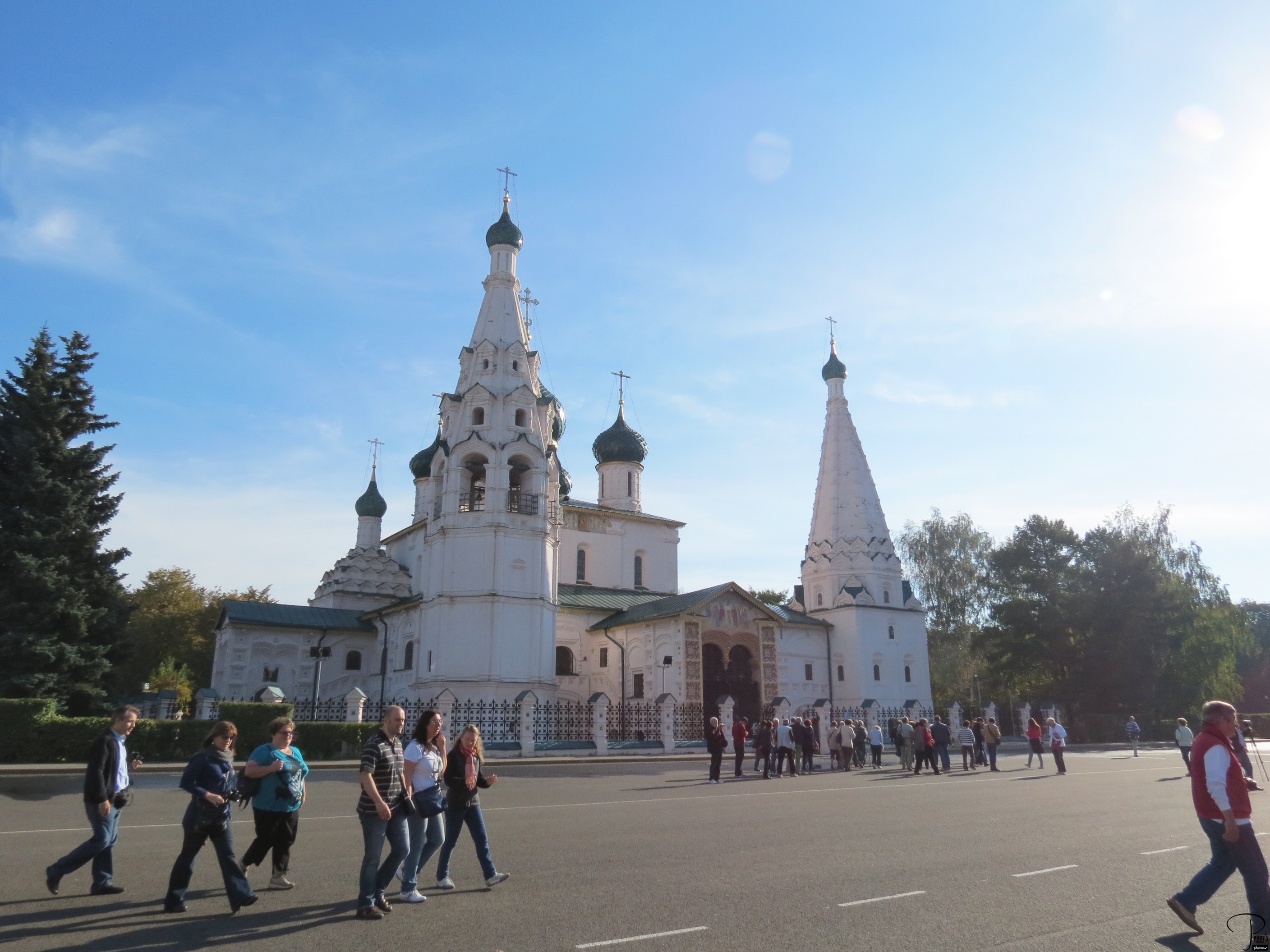
After visiting the Assumption Cathedral, we had a break at the town square. There were two churches in the square. This one is the Church of Elijah the Prophet, built 1647–1650. It was built as a private church by a wealthy family.

Yaroslavl’s Town Square
Yaroslavl’s Town Square
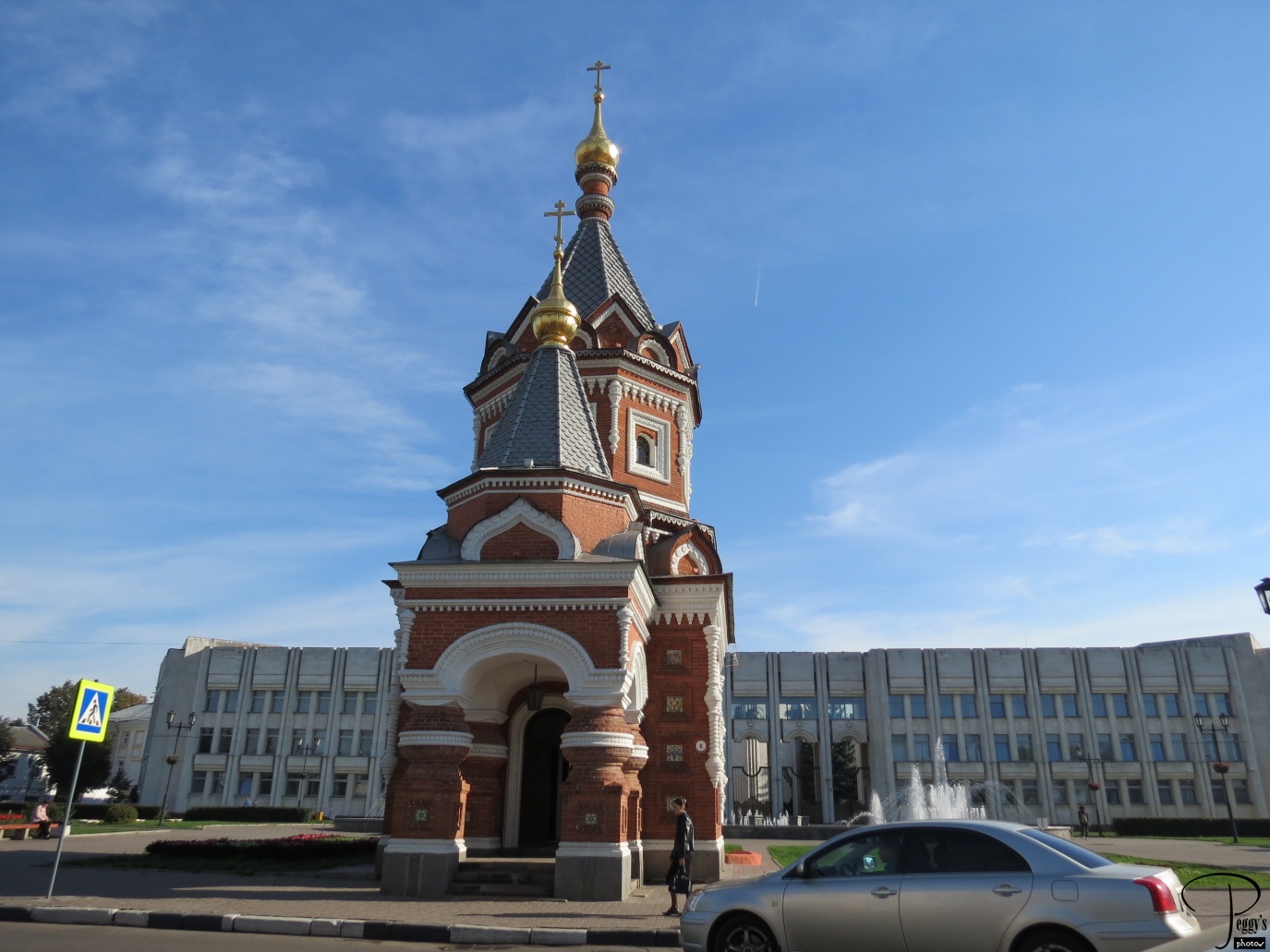
The other church on the square was the Church of St. Alexander Nevsky.

Yaroslavl’s Town Square
Yaroslavl’s Town Square
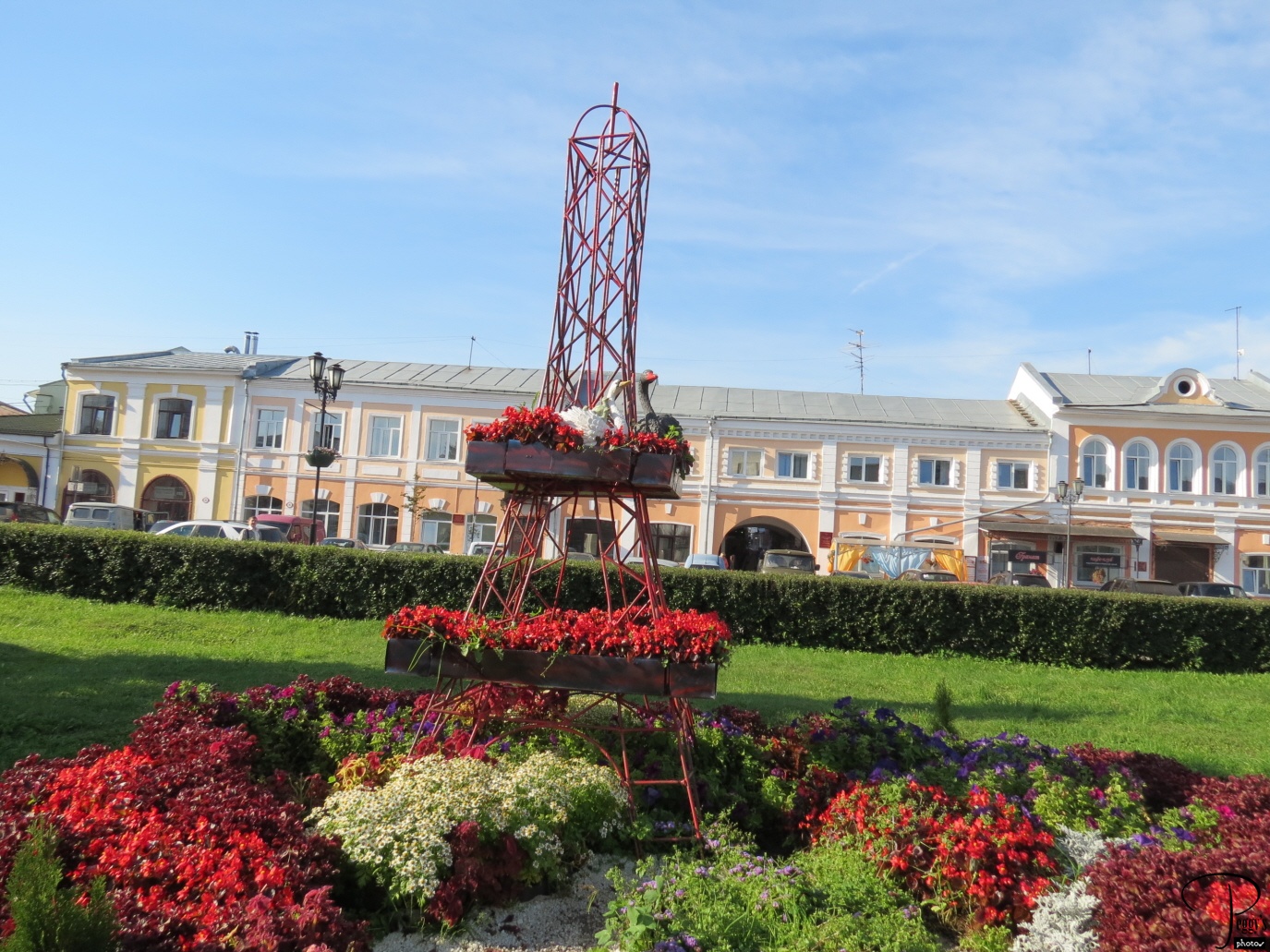
Tanya had told us that there was an Internet cafe in town. However, when we got to the town square, our local guide said it was a 10–minute walk away and we didn’t have time to go to it. This was very disappointing as we had not had an Internet connection since the beginning of our trip and also no TV (there was a TV on the ship but the programs were only in Russian and Italian). Consequently, we had no idea of what was going on in the world for almost our entire trip. I was able to text my daughter on my global phone that all was fine with me, but I didn’t receive the texts that she sent back.
So, I spent most of my free time walking around the very interesting town square garden which had a theme of world places. This one was easy to guess––the Eiffel Tower, indicating Paris and also France.
For more photos of Yaroslavl’s town square and also photos of some of its interesting buildings, go to http://www.peggysphotos.com/yaroslav–buildings–town–square/
or Slide Shows, Eastern Europe, Russia, Yaroslavl: Buildings & Town Square.

Yaroslavl’s Town Square
Church of St. Nicholas the Wonderworker
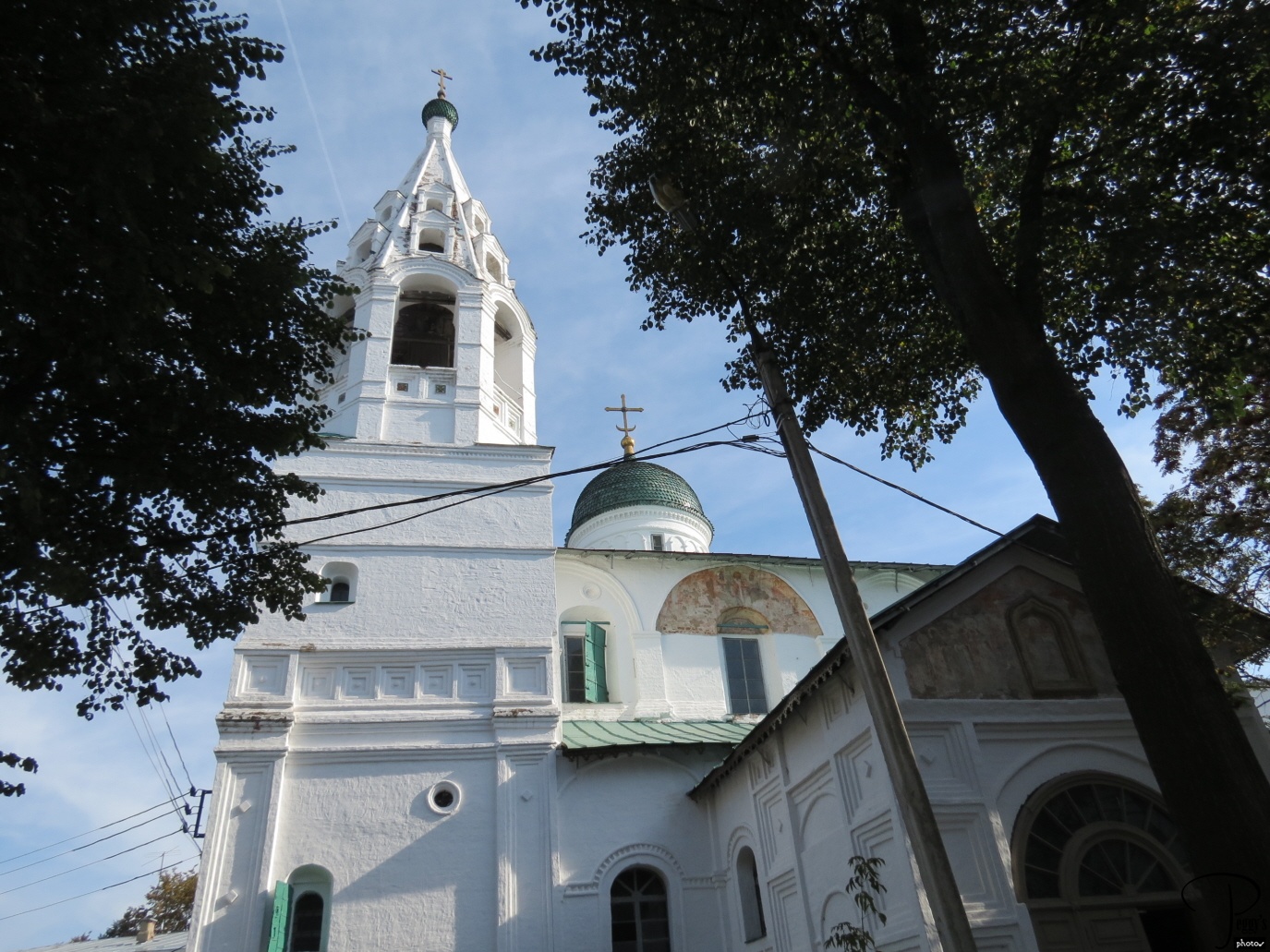
Our last stop was at the Church of St. Nicholas the Wonderworker. I haven’t been able to find out when it was built.

Church of St. Nicholas the Wonderworker
Church of St. Nicholas the Wonderworker
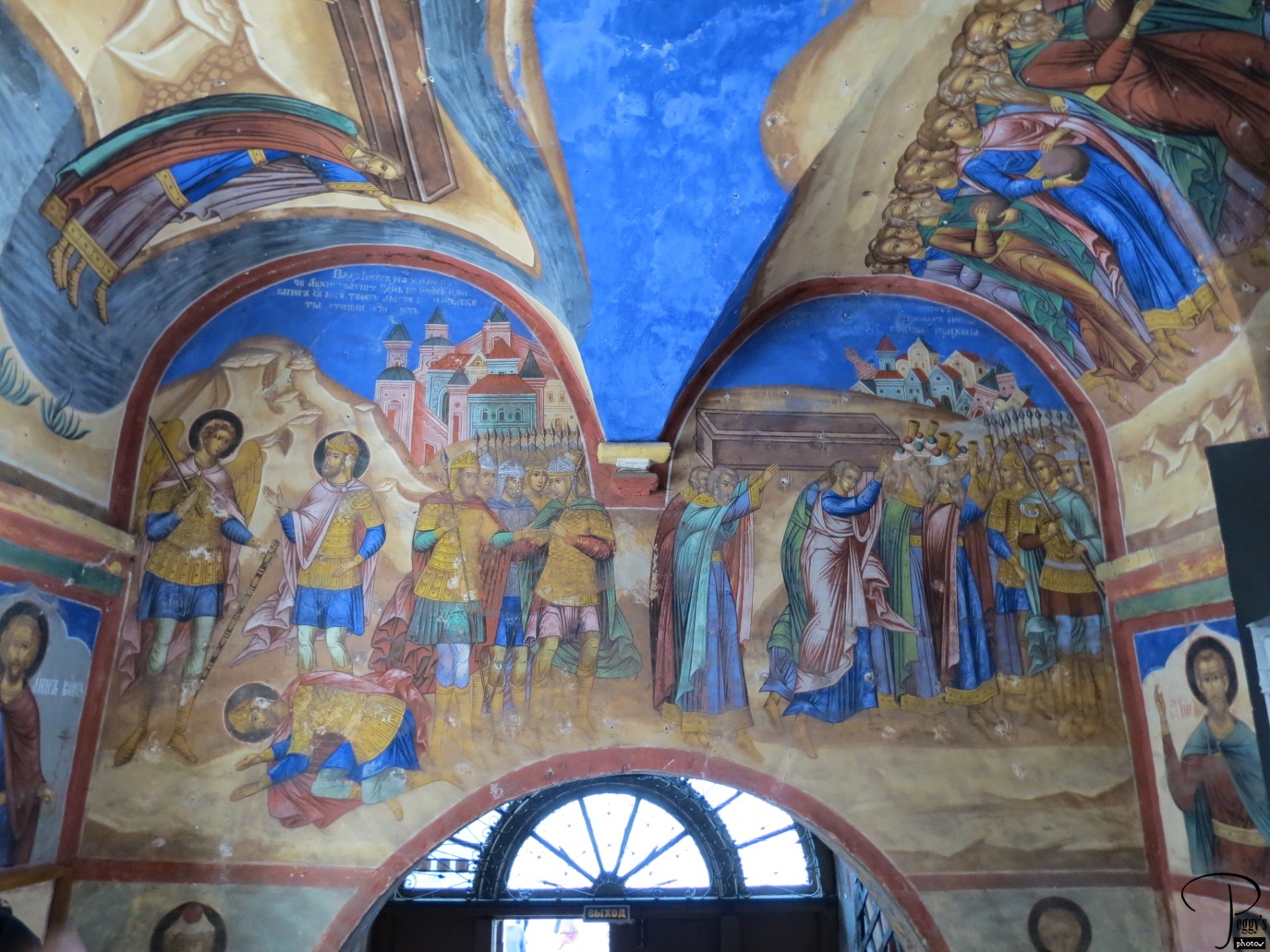
It was quite beautiful inside the Church of St. Nicholas the Wonderworker. For more photos of this church, go to
http://www.peggysphotos.com/yaroslavl–churches/
or to Slide Shows, Eastern Europe, Russia, Yaroslavl: Churches.

Church of St. Nicholas the Wonderworker
A Cappella Concert at Church of St. Nicholas the Wonderworker–Movie
We were treated to an a cappella concert at the church. The lead singer is quite good.

A Cappella Concert at Church of St. Nicholas the Wonderworker–Movie
Russian Soup for Lunch
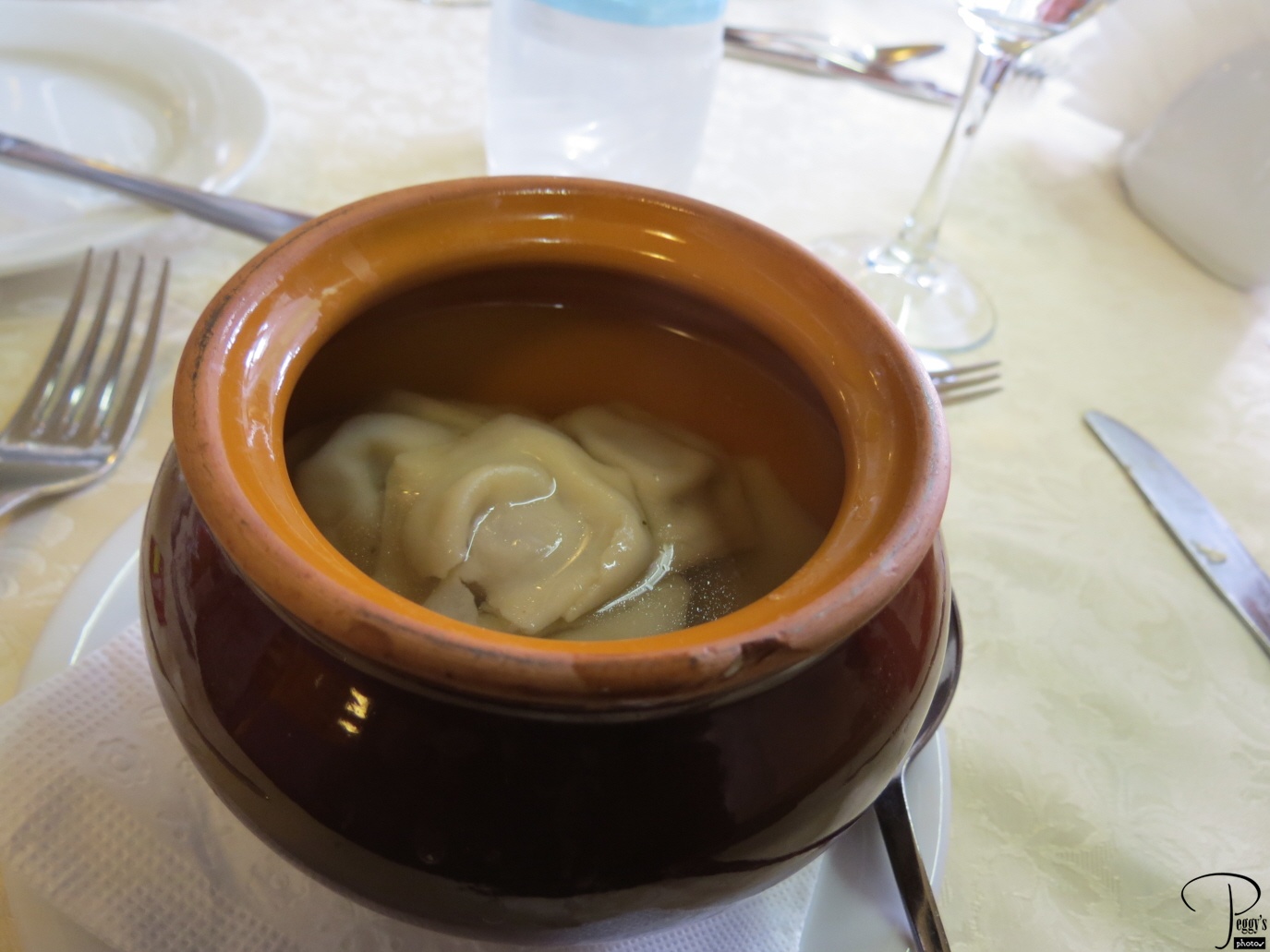
We were all supposed to be aboard the ship by 12:45 p.m. One woman was missing. She had fallen asleep on the bus while the rest of her group visited the Church of St. Nicholas the Wonderworker. Her travel mate didn’t realize that she hadn’t gotten off the bus. The bus driver discovered her, still asleep, when he parked his bus at the bus parking lot. He was aghast and put her in his car and raced back to the boat. She made it back in time. I don’t know if she actually would have been left there––maybe.
We ate lunch when we got back to the ship. It was “The Day of Russian Cuisine.” For the soup for lunch, I had bouillon with Russian dumplings. This one I will recommend as it was tasty. The dumplings had meat in them. The other soup offered was Solyanka––”a traditional Russia dish––meat soup with sour cream.”

Russian Soup for Lunch
Along the Volga River
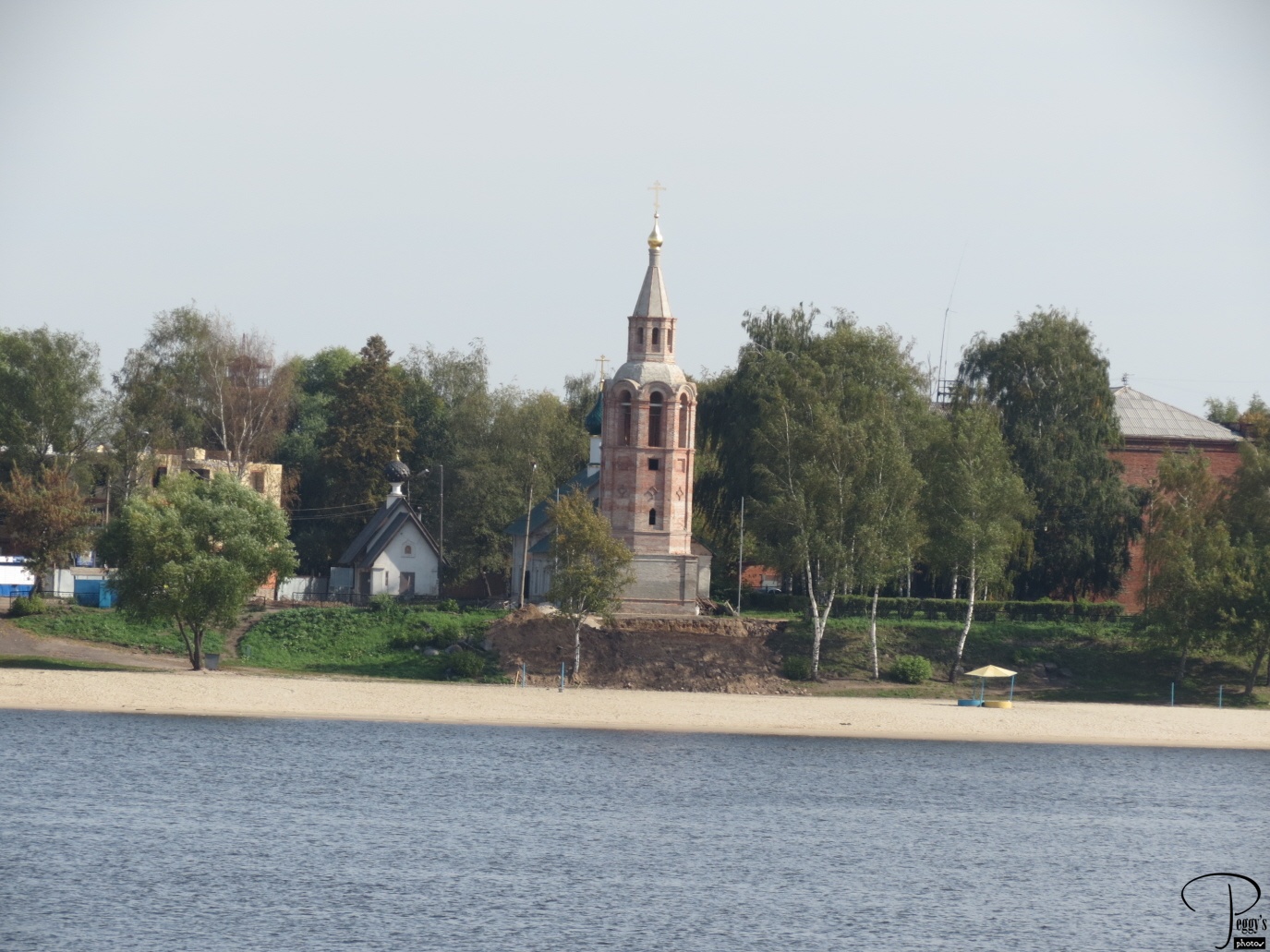
We were on our way to our next port––Goritsy––which we would arrive at the next day. To keep us occupied, there was a Russian Song Class, a Russian Tea Ceremony, and a Russian Language Class. I slept through them all. Lyn went to the tea ceremony and reported that it was much fun. But I did take some photos of sights along the Volga River before a very long, much needed nap.

Along the Volga River
Along the Volga River
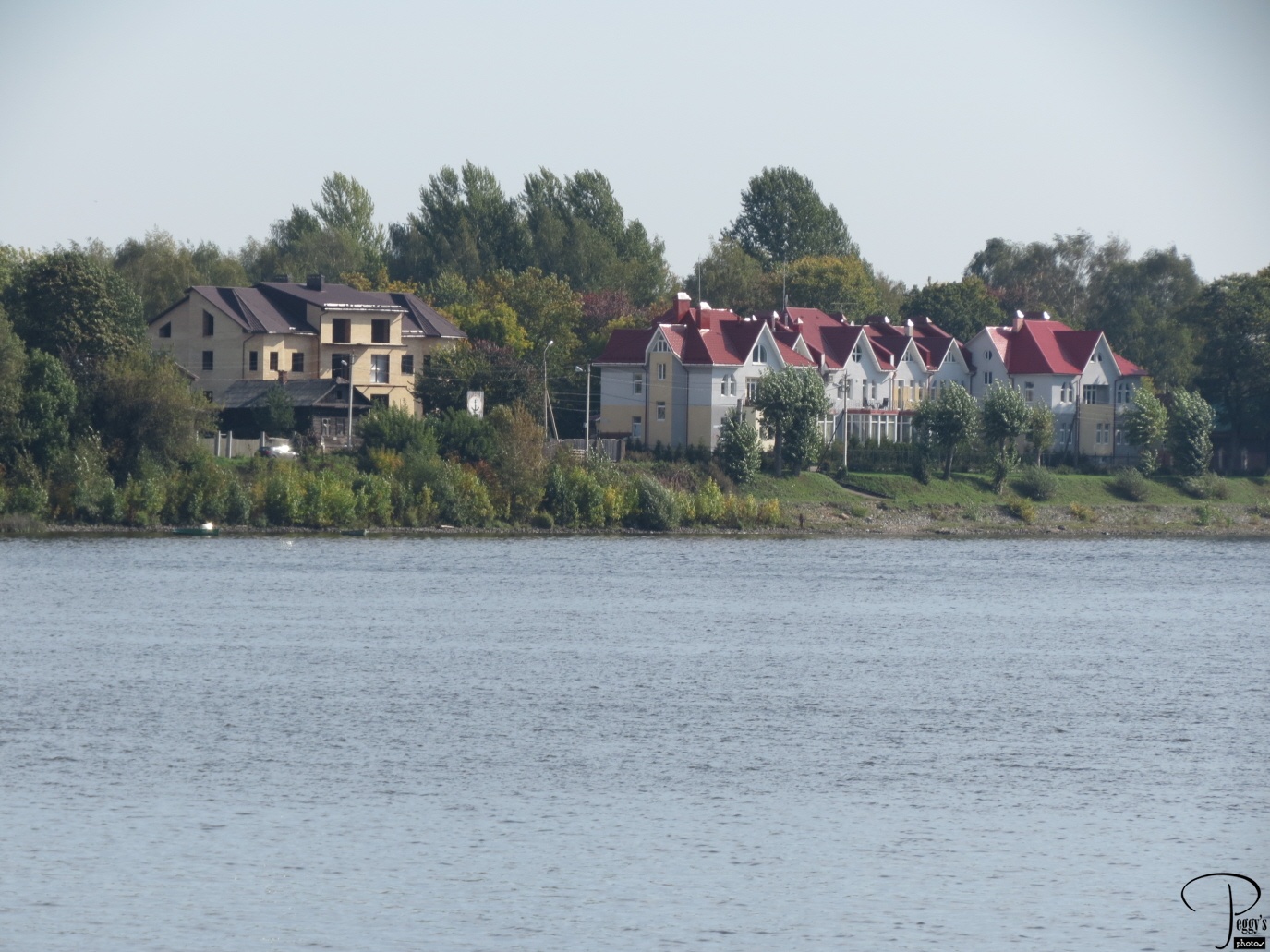
A village.

Along the Volga River
Along the Volga River
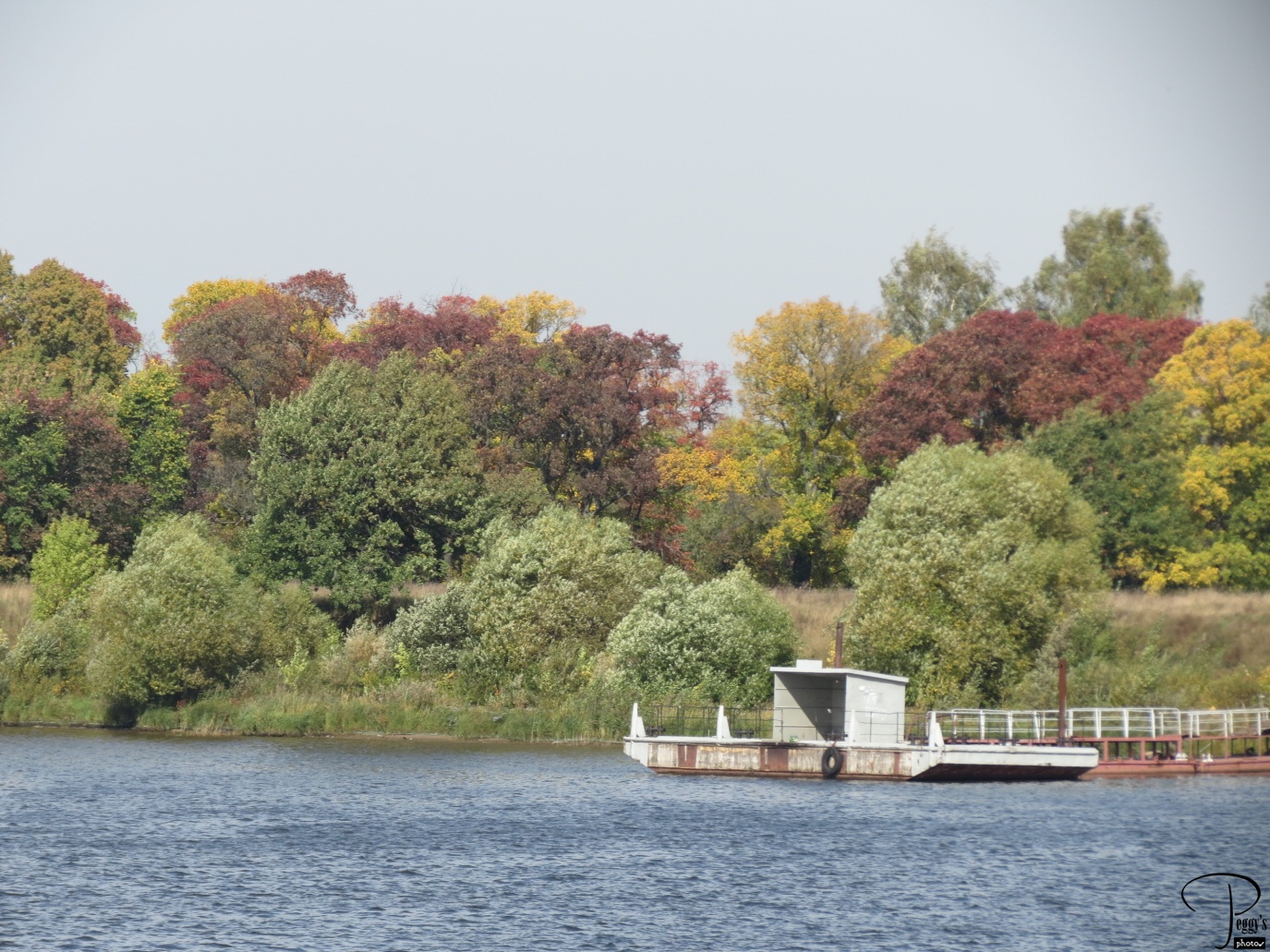
Trees starting to change color.

Along the Volga River
Along the Volga River
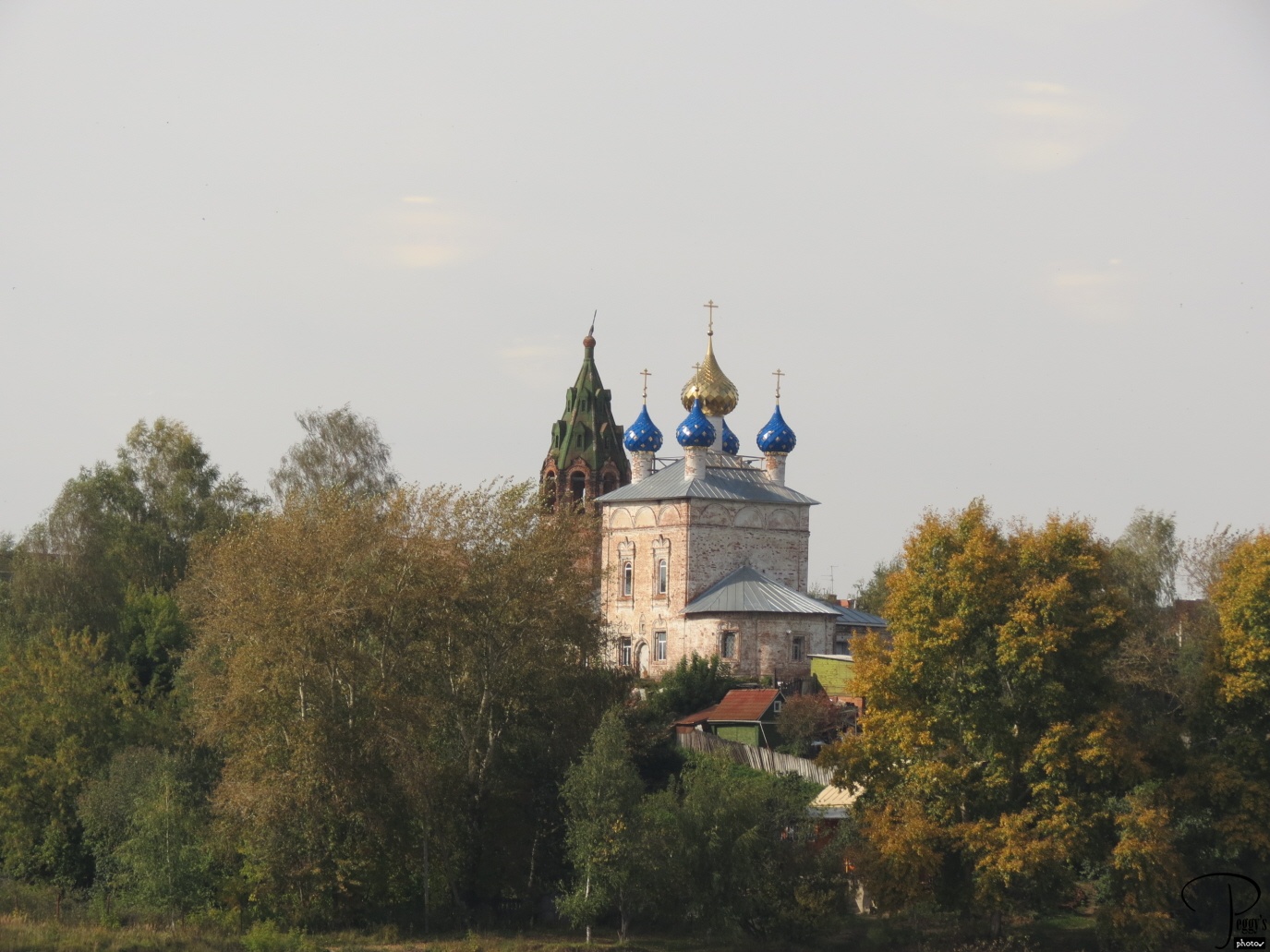
A church with onion domes.

Along the Volga River
Along the Volga River
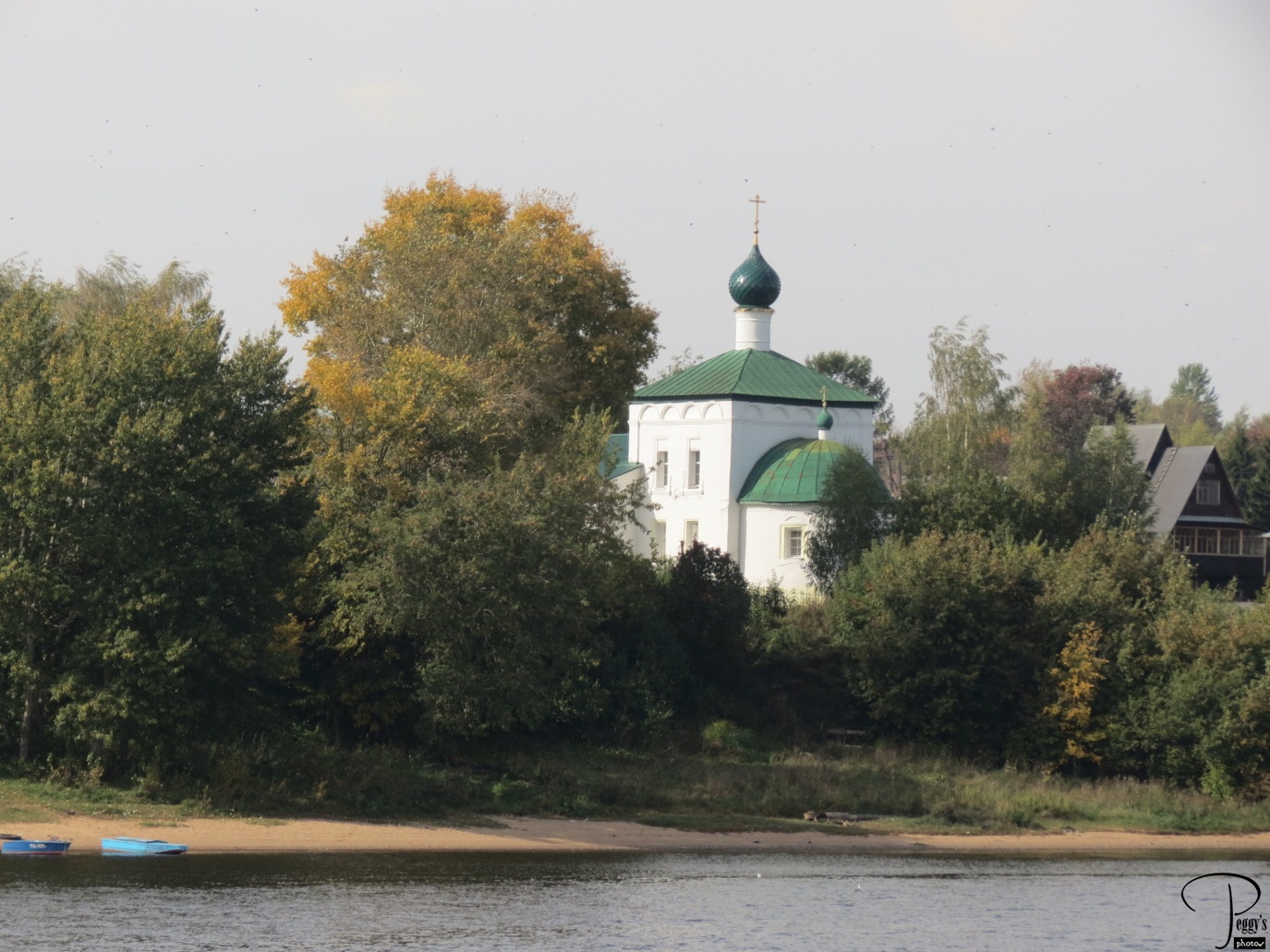
Another church.

Along the Volga River
Along the Volga River
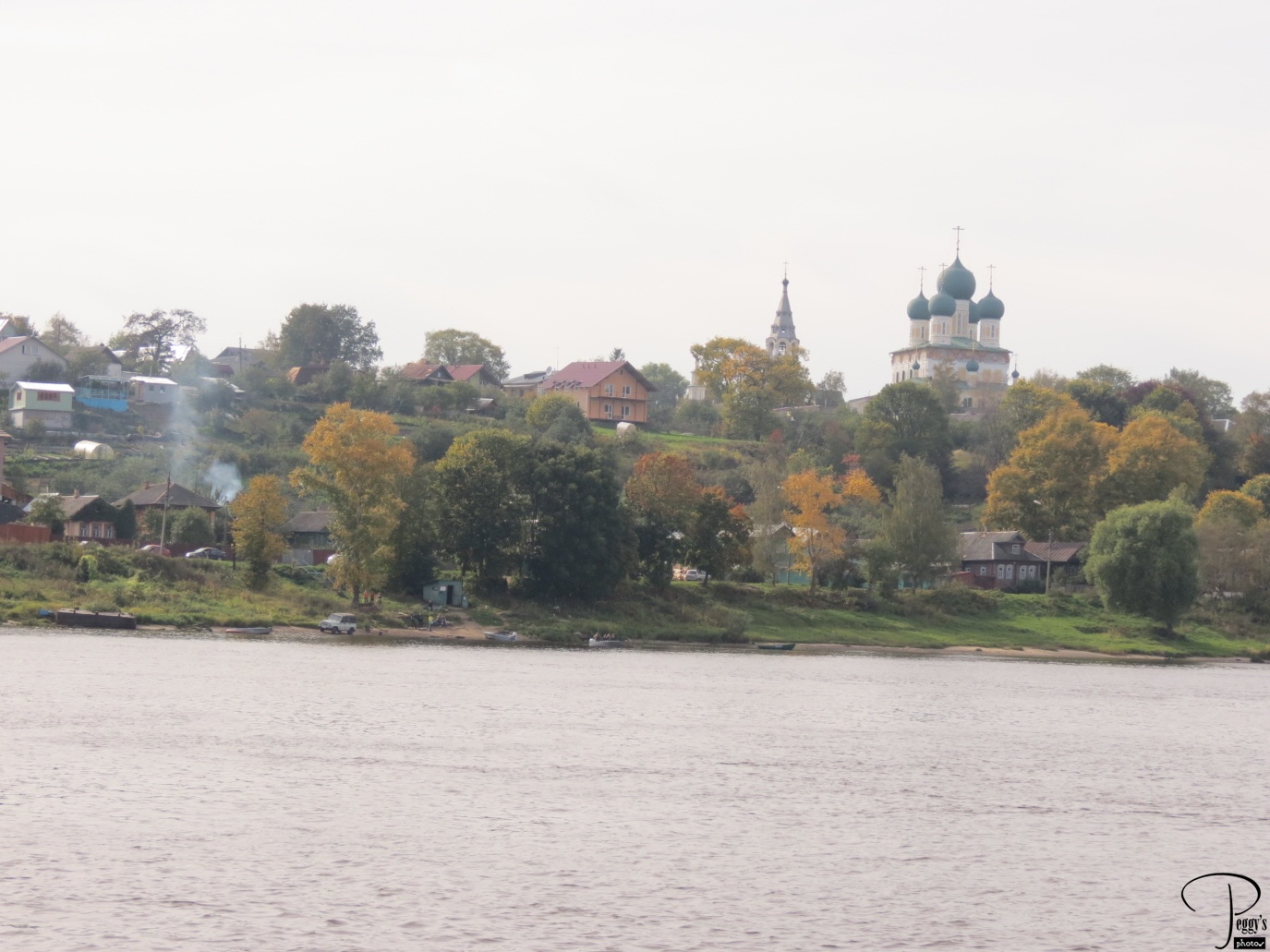
A village.

Along the Volga River
Along the Volga River

Close–up of the church in the village.

Along the Volga River
Along the Volga River
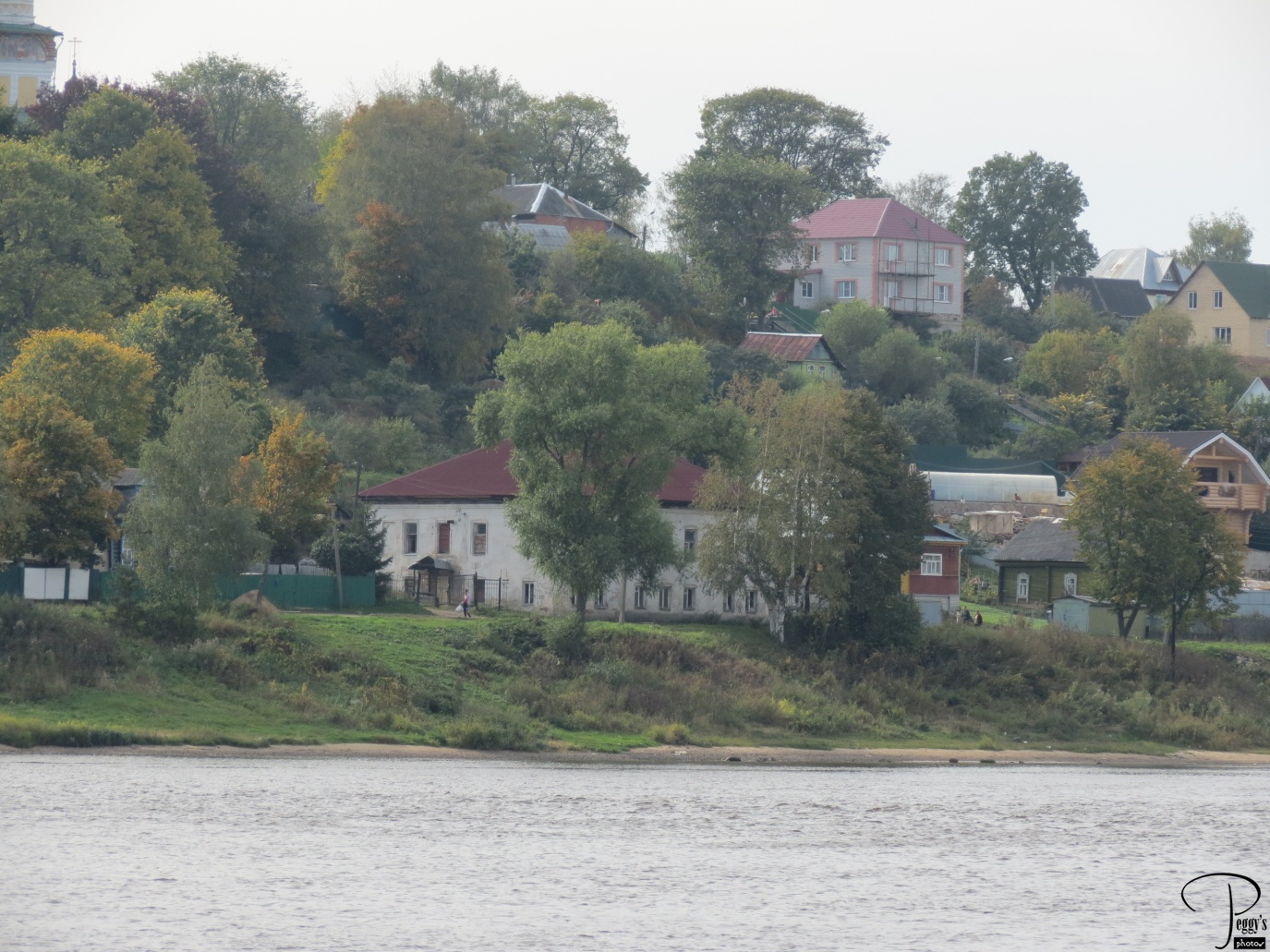
Homes along the river.

Along the Volga River
Along the Volga River
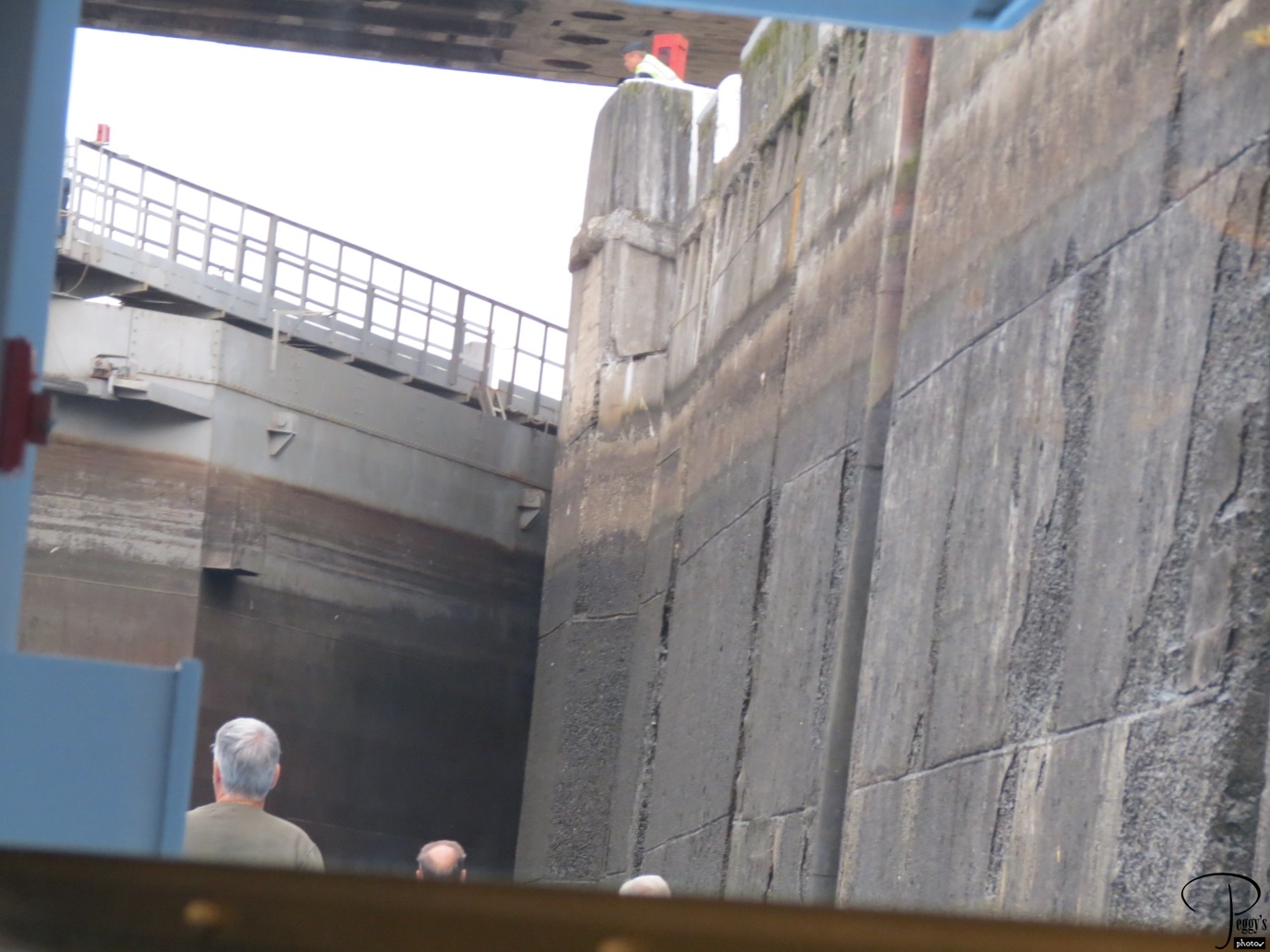
Going through a lock. I think we started at the top of the wall to come down to the next water level in the river.

Along the Volga River
Along the Volga River
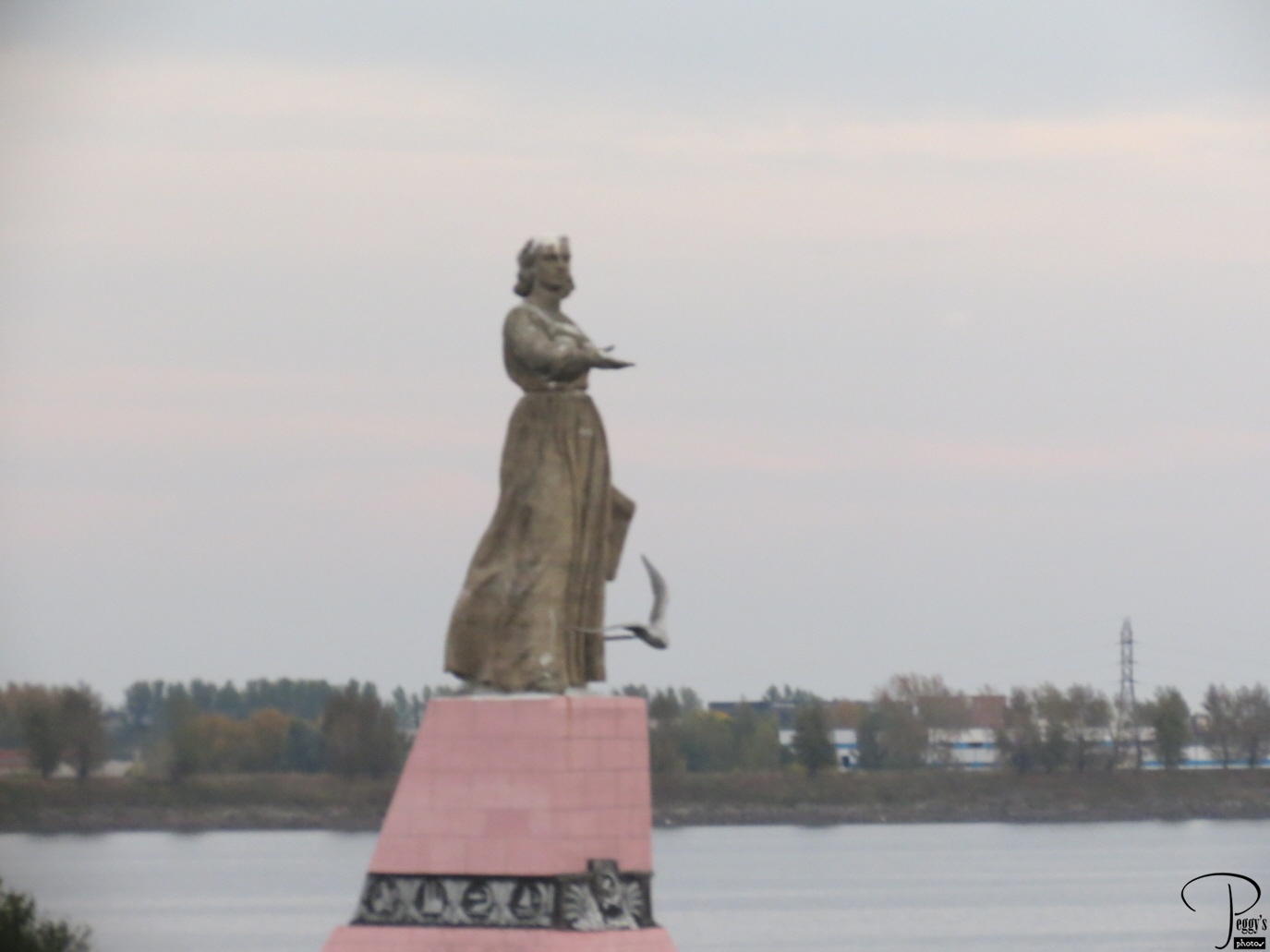
A woman of the river.

Along the Volga River
Our Russian Dinner
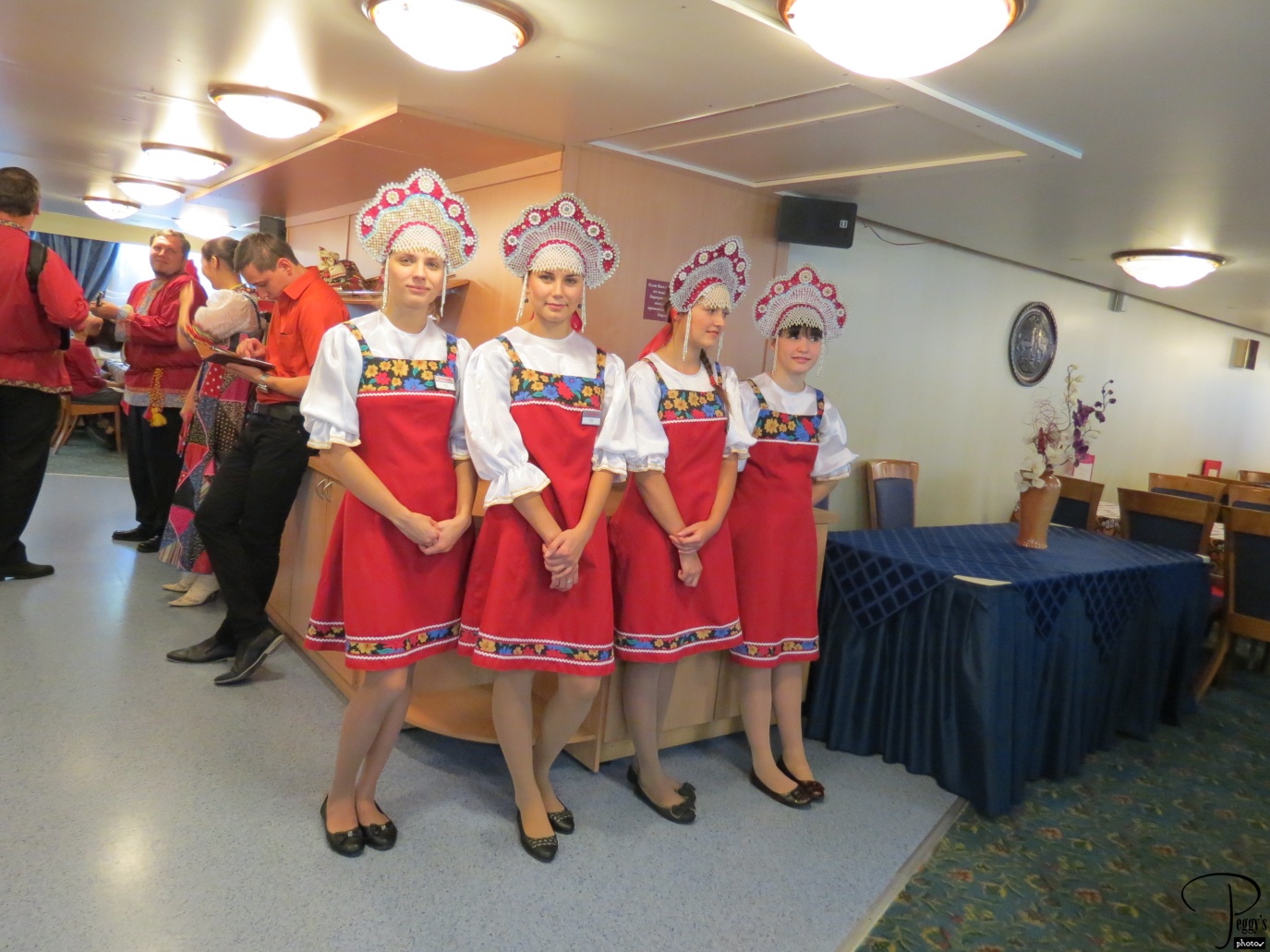
Our waitresses dressed up in Russian costumes for our Russian dinner. Those are pretty good smiles. Tanya, our Gate 1 tour guide, remarked to us that Russians don’t smile. When I would enter the dining room for breakfast, the waitresses would be lined up and their expressions were of what I would call to be of someone very withdrawn. But I would say good morning to them and did get them to smile, but it didn’t seem to be the custom for them to say good morning first.

Our Russian Dinner
Our Russian Dinner
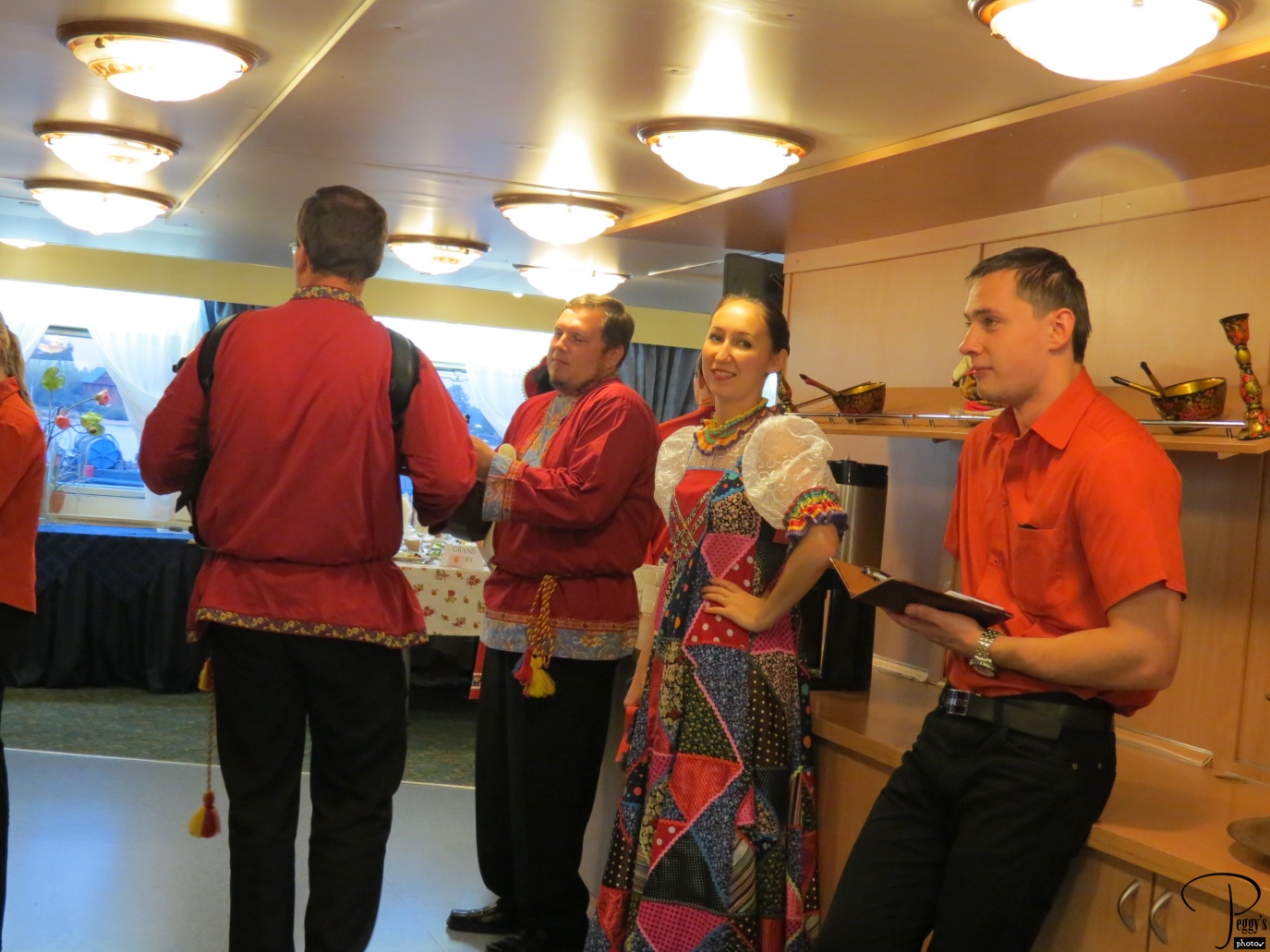
We had a quick show of Russian music and singing during dinner. The young man on the right was our good–looking wine steward.

Our Russian Dinner
Our Russian Dinner
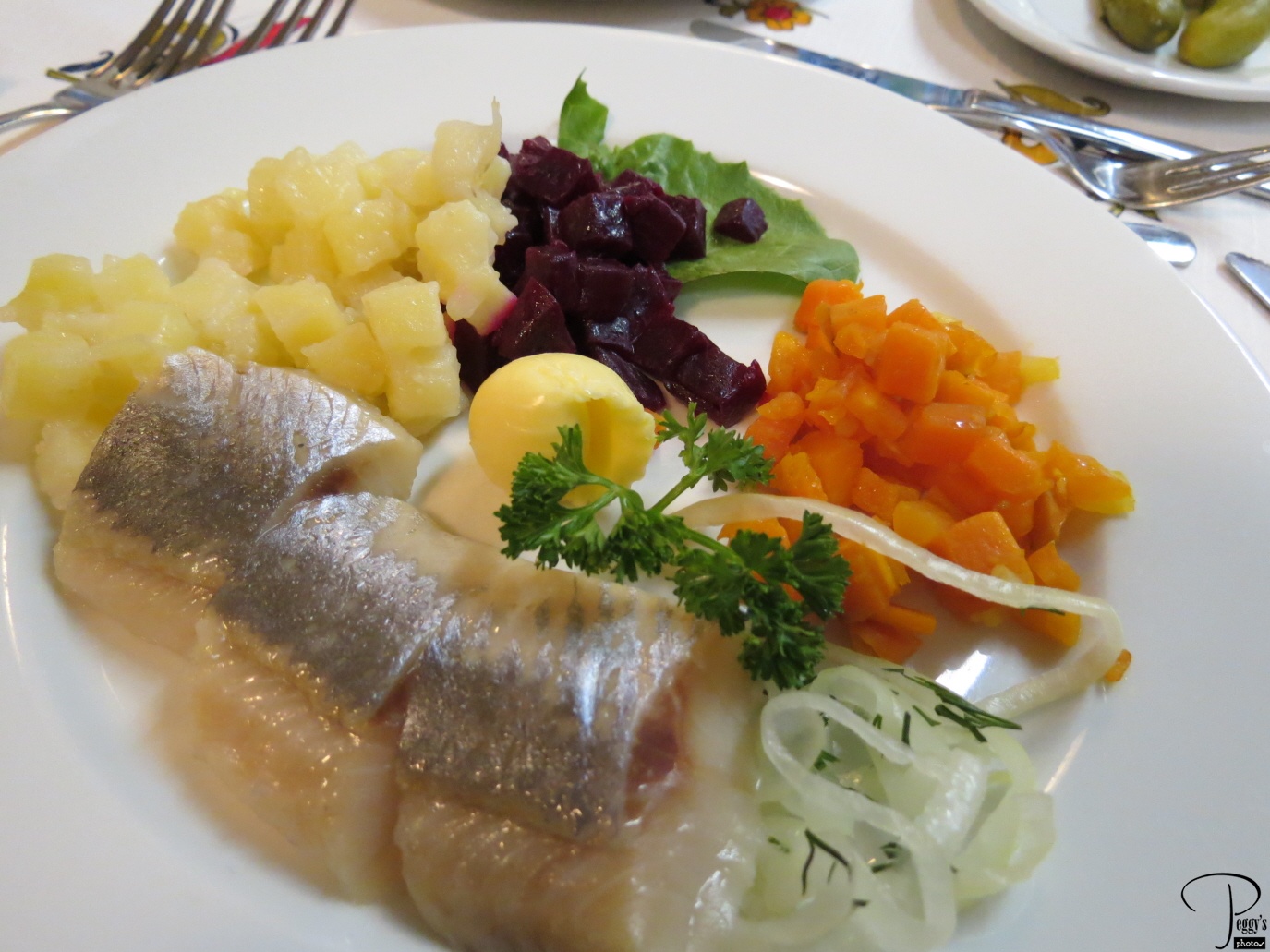
Our evening’s appetizer: “herring in Russian style (with potato, carrot, beet, butter soup). There was a concert of classical music this night at 9:30 p.m., which I just couldn’t stay awake for.
